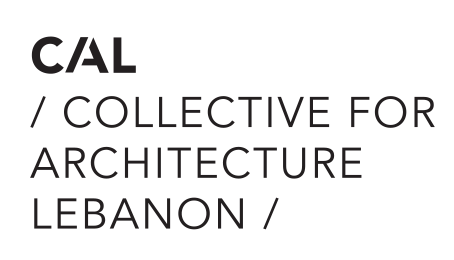ABOUT OMRAN
OMRAN’19 is the first edition of an Architectural Forum organized by the Collective for Architecture Lebanon (CAL). It will take place at the Beit Beirut Museum and AUB, under the patronage of the Municipality of Beirut from the 21st of August until the 11th of September 2019.
OMRAN’19 will feature an exhibition and a two-day conference around this year’s main theme
“Architecture of the Territory: the paradoxical relationship of the state and its territorial planning.”
EXHIBITION
Dates - 21 August to 11 September
Location - Beit Beirut, Sodeco
The exhibition will showcase 31 academic projects, the work of 7 photographers, and various studies from 11 institutionns, organizations and artists.
CONFERENCE
Dates - 30 & 31 August
Location - Munib and Angela Masri b/uilding, Engineering Lecture Hall, AUB
The conference will include international key speakers, and members from the public and private sectors, and academia, to further discuss the main questions posed by the territoriality of architecture.
We will announce the full program shortly.
CONFERENCE THEMES
Round 1
GLOBAL & LOCAL
Cities in our region have undergone violent morphological changes as a result of war, violent master planning, introduction of alien urban forms and universal architectures. Through these changes they have lost the urban, domestic and cultural typologies that defined their form and their ability to generate the framework that produced the societies that inhabited these cities. What are the strategies through which we can rethink an architecture that intersects the local and the global broadly defined? How can these intersections impact the city?
Round 2
PUBLIC SPACE & DOMESTICITY
Typologies are defined by domestic life that is shaped by locality. The configuration and production of domestic space in regional cities has faced constant change and adaptation that correspond to how these cities have grown and adapted their functionalities. What was once a diverse spectrum between public and domestic spaces has been altered by economic forces and the inability of the state to come to terms with the need for public space. How does public life manifest itself in the urban? How can we revitalize public life in saturated and over-densified cities, dominated by neo-liberal policies?
Round 3
INFRASTRUCTURE/RESOURCES & PRODUCTION SPACES
Infrastructure is one of the most present physical paradigms of a State’s power and control over a territory. It allows the distribution of resources, and the development of the economy. The space of production in itself depends on extensive infrastructural investment, the stability of the state, and the presence of capital, more increasingly provided through international neo-colonialism. Can nation-states find alternative strategies to develop systems through which a cohesive territorial planning can be implemented? What are the effects of these alternative strategies on the urban, and the its modes of production?
Round 4
THE ROLE OF THE ARCHITECT
Architecture as a discipline, and a practice, is in a state of crisis. The architect’s role is constantly changing due to globalization and a very competitive market that has driven the profession to reinvent itself and to rely less on the mere built environment. It is crucial for them to step out from only construction and go through a more polyvalent approach to offer an alternative mode of existence. How important is the agency of the architect/planner in propagating social and urban change? How can inclusive and socially-just policies provide alternative means for the dissemination of architectural practice? How can architectural/urban practices and policies inform the production of urban, social and domestic space beyond the capital investment?

